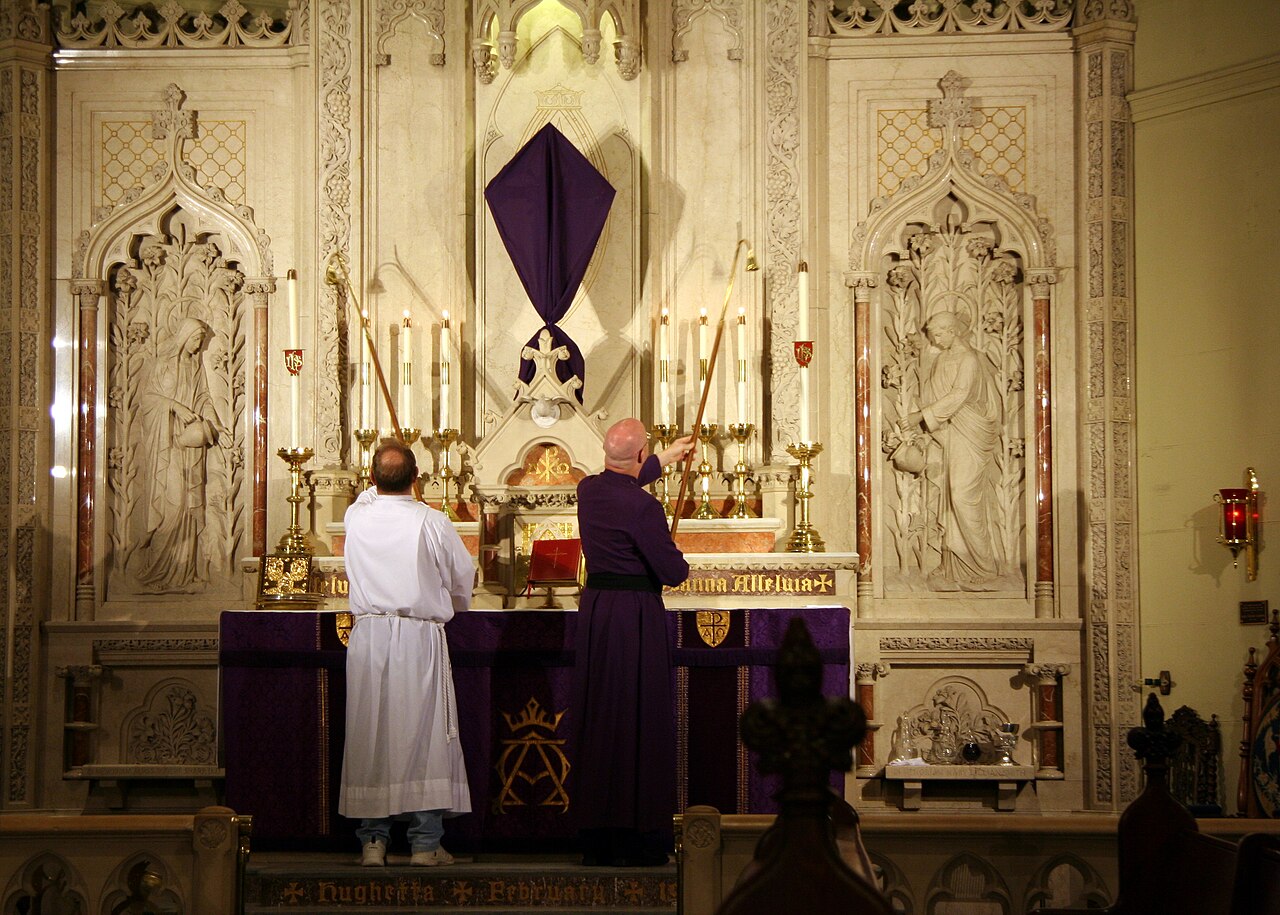I'm currently putting the finishing touches on a ritual "just for kids". I put that in quotes because, of course, adults are welcome to participate - but the ritual is written for children. In Christianity, this is almost a given now; practically any church you walk into on a Sunday morning will have a dedicated children's church, usually taking place concurrent to the adult service. There a Christian's children have a chance to play with one another, do arts or crafts, and to learn the moral and religious lessons their parents and the congregation have decided is important to them. In the Pagan community (outside of large festivals) I've never encountered any children-specific programming that is also religious in nature.
I'm sure there are a number of reasons behind this, first and foremost that many Pagan parents are unwilling to teach their children about their religion - again, for a number of very valid reasons. I'm not here to judge those parents or say they're doing it wrong. But there are those of us who
are teaching our children our religion, and the standard Pagan ritual is a particularly bad place for doing that.
Just imagine being five or six years old and attending a pretty normal Pagan circle. Generally, they open with some kind of quiet or guided meditation, where noise and fidgeting are a pretty big distraction. You as a child are not only asked to sit through this, but are frowned or glared at when doing your pretty natural kid stuff. Then, again, you are obliged to wait in relative silence as the quarters are called and the God and Goddess are invited, calling out a late "blessed be!" when the adult next to you nudges you with an elbow - because listening to one person talk on and on, or waiting silently while that person walks slowly around the circle, has completely lost all of your interest. No matter how engaging or interesting the mid-ritual activity, you've already zoned out completely. Your interest might perk up again if juice and cookies are offered as cakes and ale, but that's usually followed by the reversal of the whole "be quiet, they're casting circle" routine.
Us Heathens have it a little easier (since objectively, blots are a bit more fun!) but I'm talking today about the generic Neo-Wiccan that so often accompanies the umbrella term Paganism. And in this, I suggest we take a leaf out of Christianity's book. I know, not many Pagans like to hear that; but the truth is that Christianity struggled with this same problem a few generations ago: Sunday school was a lot like regular school, and not a whole lot of kids were enjoying it or getting much out of it. But youth pastors across the country came up with some great solutions to get kids more involved in their learning, and we can learn a lot from the one word that is emphasized over and over: Participation.
If we can write a ritual that actually gets kids interested and involved, that would go leaps and bounds towards helping children learn more about the faith of their parents (or at the very least, relieve the poor kids' suffering at the hands of boring adult ritual!). To do this, I've broken down Participation into four easy-to-do parts that should make almost any ritual appealing to children.
1) Language
I feel like this is one of the most important factors of all. Use words that kids can understand. Use words that kids can understand
easily, so they can listen more attentively and actually internalize more of what is being said. As adults, hearing a lot of technical jargon or subculture-specific vocabulary is often an instant turn-off of attention; for kids, flowery phrasing and Ye Olde English is much the same. For participation, more 'repeat-after-me' is great, but only really works when those repeating can understand what exactly they're saying. Also, make sure that the ritual really explains everything that's happening. Before you call the quarters, just give a quick and simple sentence or two about the elements, and why we want to welcome them to the circle. If the children have no idea why something is happening (or even what's happening at all!), attention dips quickly.
2) Songs
This one goes hand in hand with language; basically, if you can sing it, you should be singing it. Kids do best with simple melodies and repeated words, so it doesn't have to be anything complicated at all. Get their hands clapping! Let them dance! One technique I'm using for the ritual I wrote is to have simple chants to welcome the elements, all with the same tune and simple repeated words, so kids can really lose themselves in the song and have a great time doing it. If you're not great at writing your own stuff, there are songs and chants all over youtube that are simple enough for children to do, and an iPod with speakers (as long as you're singing too!) is a perfectly acceptable solution for the less musically-inclined.
3) Kid-friendly Ritual Objects
We want our kids to be
really participating in this ritual, so the last thing we need is a bunch of beautiful, breakable lying around to be tripped over, knocked over, or any variation thereof. Having a well-defined center can be helpful for focus, so a small altar table is perfectly acceptable - just make sure the things on it are ready to be handled by children. For my children, I bought some unfinished wooden boxes at the craft store and painted colors of the elements inside to serve as elemental representatives around the circle; but big rocks with bright paint in element colors works just as well. For the altar table, cloth dolls for the God and Goddess would work great for very young children, older ones would probably be fine with the more inexpensive resin designs from Sacred Source or the like. Plastic reusable (since we're green Pagans!) cups for cakes and ale, and make sure whatever you're using for 'ale' is set on the floor and has a lid. Sticks make fine wands, athames really are not necessary, and a lot of dollar stores sell plastic wine glasses that would make great chalices. Ideally, the children are actually interacting with these ritual objects, and we want them to be interacting with them freely and un-selfconciously. If you're hovering over them, apprehensive about the condition of your things, the kids are going to feel that and close themselves off.
4) Crafts
Like songs, kids almost universally love crafts. It doesn't have to be big and complicated - in fact, it's probably better if it's not; this is a ritual where we want the children to feel like independent participators that don't need an adult to hold their hand through every step of the process. Even coloring sheets and crayons would be great! Something simple like "draw a picture of what you want to thank the Goddess for" can go a really long way. Bonus points for opening up to children's natural creativity: hand out a coloring sheet and tell kids to use the colors that feel right to them in this moment, not necessarily the ones they would think of as being the 'right' colors.
The truth is that Pagan ritual is very uniquely suited to being kid-friendly; it only requires changing a few things, and a willingness to get down on the children's level. Just like any ritual, sometimes things are going to go wrong, kids are going to get bored or not want to participate, and that's fine. In fact, it's totally okay in a children's ritual, because the ritual itself should be written to accommodate these things. The other children aren't going to get worked up if we have to pause to open a door for little Nadia, or if Travis trips over the representation of Earth and falls out of the circle; and I don't think the deities are, either. Kids are kids, and recognizing and accommodating that, even in ritual, is in my opinion the best investment Paganism can make into its future as a religion.
























